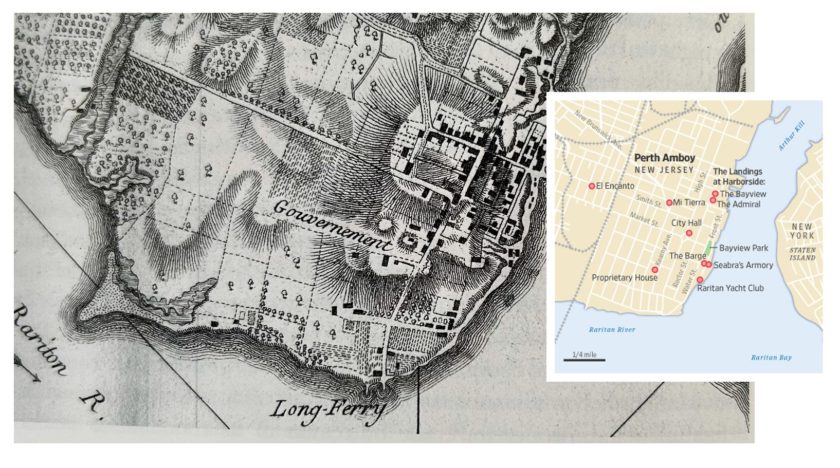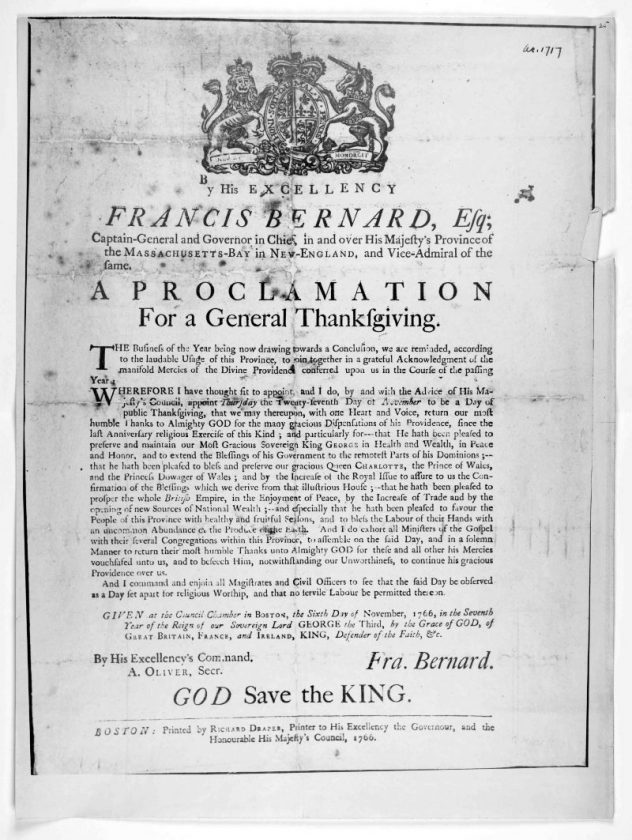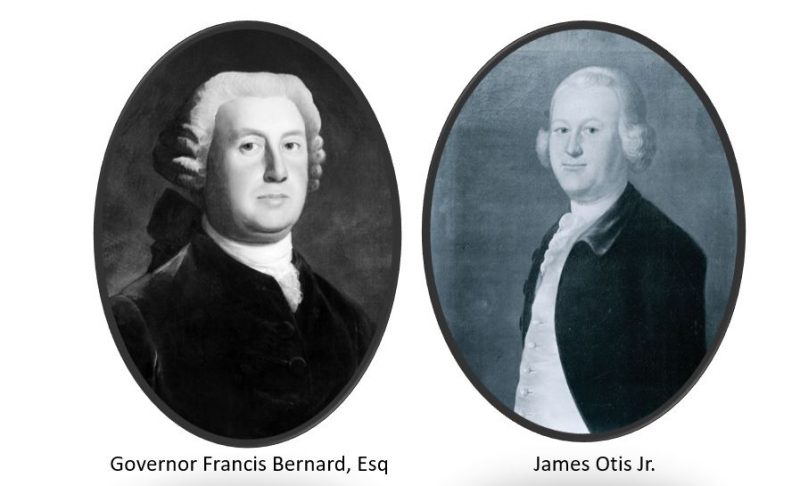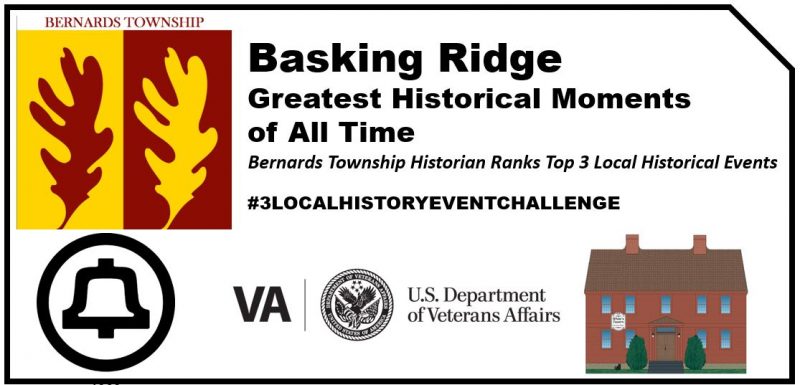Our curiosity started with a round-table discussion: Who is Francis Bernard, and should there be a statue to recognize his service to New Jersey? Read the story and tell us what you think at the end.
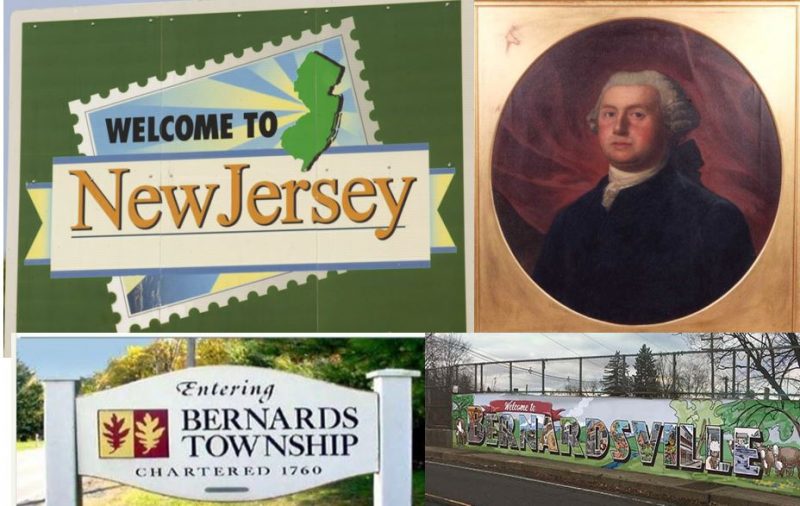
It is almost as though Francis Bernard who governed Massachusetts shortly before the Revolution and the well-liked Bernard who led New Jersey during the French and Indian War were different men. Bernard arrived in New Jersey at the age of forty-five, waged a vigorous war on the French, and made peace with the Delaware native Americans.
Bernard witnessed the rapid dissipation of happy sentiment stemming from the Anglo-American victory in the French and Indian War and the first stirrings of colonial radicalism. The writs of assistance case, the Stamp Act riots, and the ensuing boycotts of British manufacturers all happened on his watch. In American history, Francis Bernard is usually described as the unpopular royal governor of pre-revolutionary Massachusetts, but in New Jersey, he should be remembered as a skillful, energetic, successful, and well-liked executive who managed the colony’s part in prosecuting the war with the French. He also maintained a happy relationship with the legislature despite the potential conflict over money issues, and he avoided partisanship and entanglement in local politics. Perhaps most importantly, he was the only governor of New Jersey in nearly three centuries to show much concern for the relationship between native North Americans and Euro-Americans.
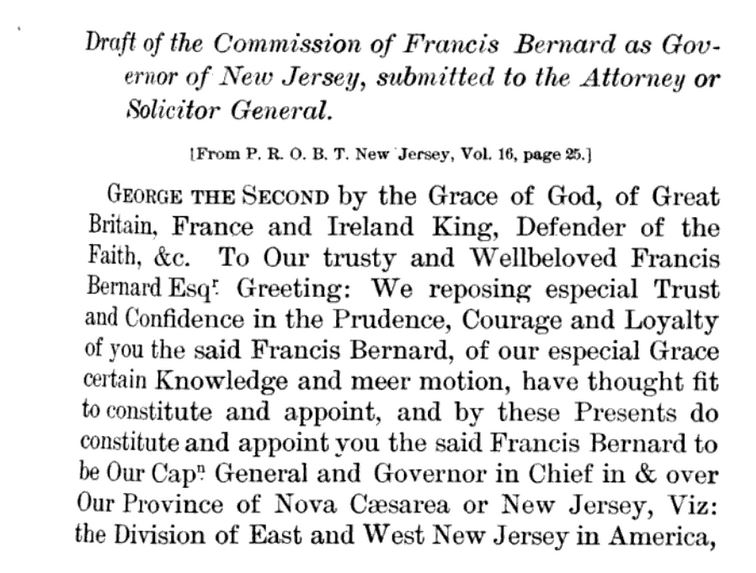
Volume 9
Royal Governor Bernard took decisive military measures in New Jersey to improve the Minisink defenses. He understood that the best defense against frontier raids was a peace founded on an informed Indian policy that sought to resolve disputes. Other, larger forces made his program more successful than it might have been in isolation, but it is worth noting that after his departure, the Indians of New Jersey were again forgotten.
Francis Bernard’s Journey – Royal Governor of New Jersey and Massachusetts
The principal biographical details of Francis Bernard’s life are reasonably familiar to historians of the American Revolution. Bernard was the son of an Anglican rector, Rev. Francis Bernard, but both his natural parents died while he was still a child. His mother’s second husband, a scholarly cleric, and a maternal aunt raised him largely. Before entering Christ Church College, Oxford, he was educated at England’s oldest public school, Westminster. After training at the Inns of Court, he married into an aristocratic Presbyterian family. A lawyer by profession, Bernard left the town of Lincoln in the East Midlands in 1758, at age forty-six, to become governor of New Jersey; within eighteen months, he was promoted to the governorship of Massachusetts.
As the Historian for Bernards Township, New Jersey formerly known as Bernardston, in honor of Francis Bernard, Esq., I’ve summarized and interpreted the life of Francis Bernard.
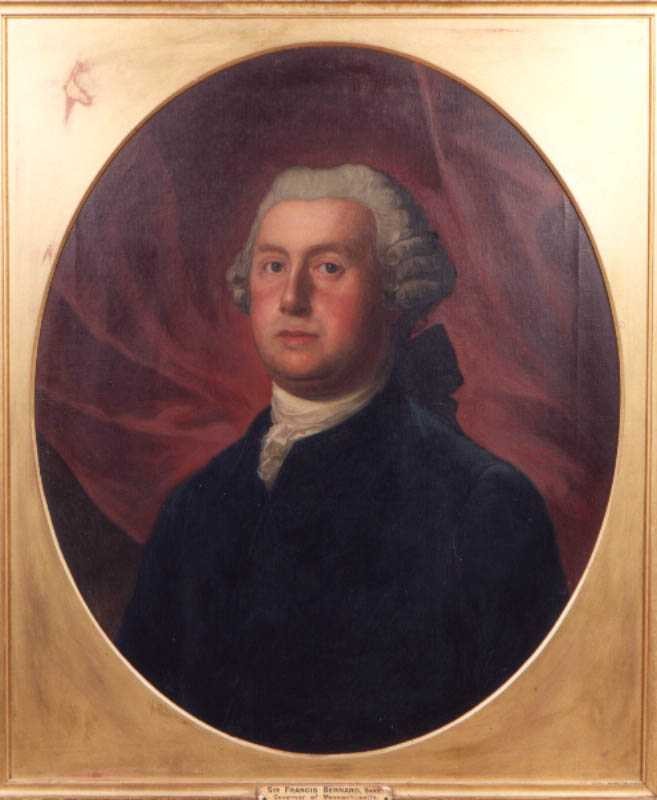

- You were born in Brightwell, England, christened on July 12, 1712.
- You’re the son of Reverend Francis and Margery (Winlowe) Bernard. Bernard, Francis was born in July 1712 in Nettleham, England.
- You graduated from Christ Church, a constituent college of the University of Oxford in England, and passed the Bar in 1737. Scholar Saint Peter’s College, Westminster, 1725. He graduated from Oxford (England) University in 1736, and I earned a Doctor of Civil Law (honorary) in 1772.
- In 1741, you married Amelia Offley, whose family helped you be considered for a job as governor in the colonies. You had 10 children, six sons and four daughters.
- You were approved as the Royal Governor of New Jersey on January 27, 1758. Your journey started in April 1758, and you arrived in Perth Amboy with your wife and four children on June 14, 1758 (a six- to ten-week voyage). You were 45 years old.
- You landed at Perth Amboy on Wednesday, June 14th, 1758, from “His Majesty’s ship the Terrible “-on board which he had come as a passenger, having with him his wife and family; and as the papers of the day furnish a more particular account of his reception in the province than is given of that of any of his predecessors, it may be well to portray the form and ceremony that in those days ” did hedge about a Governor.”
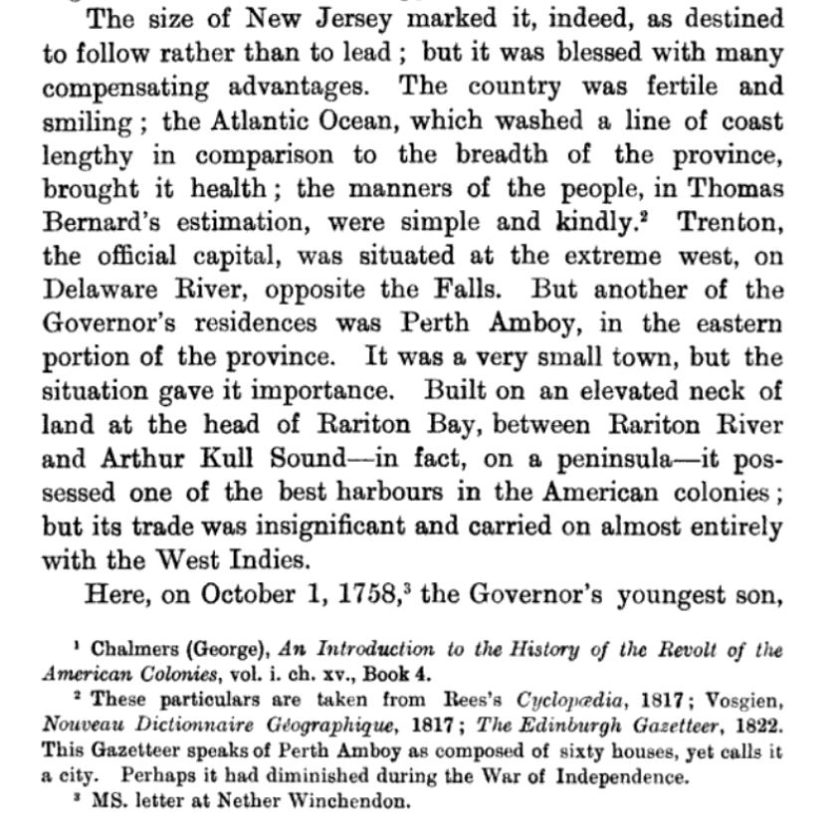
- You described your residence as a “War office” in Perth Amboy, Nova-Caesarea (New Jersey) province.
- You were sent to NJ to deal with the Indians and settle the province. You are credited with securing peace with the Unami and Lenape Indians and the settlement of Indian claims in the Treaty of Easton (PA) in 1758. Fourteen tribes attended and accepted the Treaty of Easton. At its conclusion, they would “bury the hatchet,“ signifying the token of lasting peace between the settlers and the Indians.
- You secure over 3,000 acres for the “aborigines” (Minisink natives) and settle a town called Brotherton for them, building 10 houses for the new inhabitants.
- You secure the Charter of Bernardston, authorized and signed by King George II formally recognizes Bernardston, New Jersey on May 24, 1760, while you’re preparing to leave to take on a new governor job in Massachusetts:
- “…a perpetual township and community in word and in deed to be called none but the Township of Bernardston…, to choose annually a constable, overseers of the poor and overseers of the highways for the Township…Witness our trusty and well-beloved Francis Bernard, Esq., our captain general and governor in chief of our said province of New Jersey…”
- Your success as Governor of New Jersey earned you the governorship of Massachusetts (August 2, 1760), which you treated as a promotion.
- Addressing the Assembly for the last time in March of that year, he said:” I do assure you that I shall leave this province regretfully. Your good disposition towards his Majesty’s government, and your kind acceptance of my services, have given me the fairest prospect of an easy and creditable administration. I had flattered myself that I might have done lasting service to this province, in assisting to compose the differences that still prevail in it, to remove the few fears and jealousies, if any, that now remain, to rectify the little errors in policy which have inadvertently crept into the administration, and above all, to establish a perfect harmony in the general government, upon the surest foundation, an exact balance of the several political powers which compose it.” There can be no doubt of the advantage New Jersey would have derived from a longer continuance of Mr. Bernard as Governor. The Assembly in their answer appears to have been aware of his merits:” Your Excellency’s leaving this government (say they), we esteem as a public loss, having in our minds anticipated the happiness we had the greatest probability of enjoying under your administration. Your knowledge in the profession you exercised antecedent to his Majesty’s appointment of you to preside here, flattered us with hopes of a speedy and equitable decision in the only litigation of consequence which exists in the colony [an allusion to the land question, involving the titles and rights of the Proprietors]. Your general conduct will remain gratefully impressed on the minds of the people, who will ever consider themselves in a manner interested in your future ease and happiness.”
- Given his short time in Jersey, he was sent to Massachusetts as there seemed to be a stronger need there. You move into “The Province House” in Boston.
- Thomas Boone would be your replacement as Royal Governor of New Jersey. Though he assured his patron that you would leave New Jersey “with regret” and praised “the pleasantness” of Perth Amboy, you complained that it was “wholly secluded from refined conversation & the amusements that arise from letters arts & sciences,” and so we know you look forward to moving to Boston.
Bernard’s New Jersey Accomplishment – The Treaty of Easton
Like other governors, much of Bernard’s time was spent with the difficult problem of persuading the New Jersey assembly to part with the resources needed to keep Britain’s war effort afloat. Bernard’s first major success was to assist in negotiating a peace treaty with the Delaware Indians and other disaffected tribes.
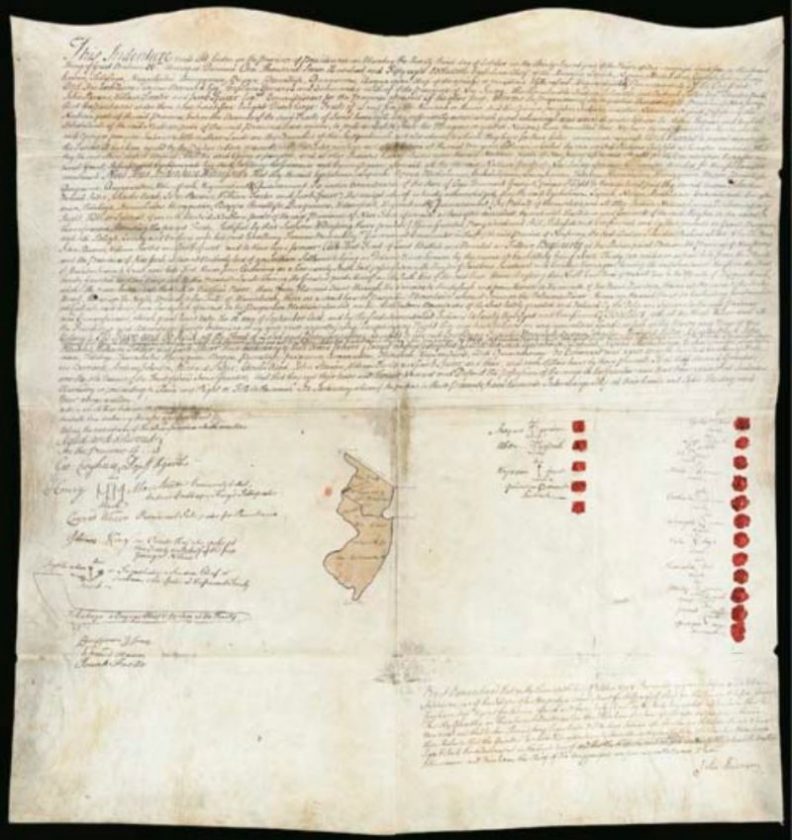
The Charter of Bernardston, New Jersey – May 24, 1760
A charter is a document that gives colonies legal rights to exist. Charters can bestow certain rights on a town, city, university, or other institution. Colonial charters were approved when the king granted exclusive powers for the governance of land to proprietors or a settlement company. The charters defined the colony’s relationship to the mother country as free from Crown involvement.
For New Jersey, on June 24, 1664, James, Duke of York, granted Lord Berkeley and Sir George Carteret, ownership of a swath of land between the Hudson and Delaware Rivers. The charter referred to these lands as “New Jersey” in honor of Carteret’s defense of the English Channel island of Jersey during the English Civil War.
The Charter of Bernardston, New Jersey approved May 24, 1760, is Bernard’s greatest gift to Bernards Township, alongside Bridgewater and Bedminster’s royal charters recognizing formal boundaries, representation, and designation from King George II to the citizens of these areas. Today there are two days that represent this event: Charter Day Street Festival and Bernards Township Day – A Day of Community Service and Pride.
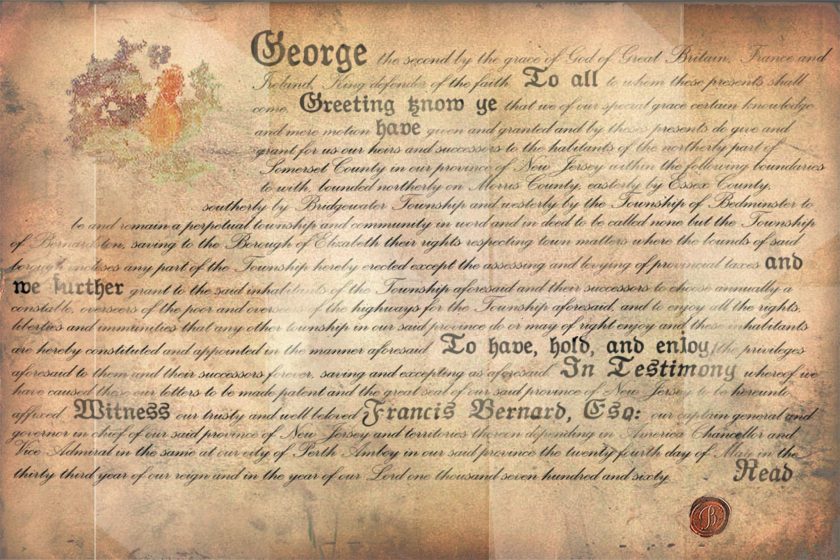
Thanksgiving Proclamation – Thank You, Governor Bernard,
On a positive note for those from Massachusetts, on November 6, 1766, you approved the Proclamation authorizing November 27, 1766, for a “General Day of pubic Thanksgiving” where no labor would be done in Massachusetts. Modern Thanksgiving was proclaimed for all states in 1863 by Abraham Lincoln.
Troubling Times
In October 1760 – King George II died. George III became king of Great Britain and Ireland in 1760 at the age of 22, following his grandfather George II’s death. This would prove difficult for your reign as governor.
- In 1762, you have a stroke that hurts and limits your effectiveness for the rest of your life.
- There is “most perfect harmony” in Massachusetts when you arrive, but having to enforce unpopular British taxes soon makes you a hated figure.
- You’re between a rock and a hard place – get Britain what it needed, but represent the colonists and the colonists feel less represented every year you serve as Governor in MA.
- Your political opinions in Massachusetts make you a very unpopular Governor.
- You become a public adversary of James Otis Jr, Samuel Adams, and his cousin John Adams.
- You are accused of being an alarmist to the crown. You were overzealous about the need for British troops in MA until the Earl of Hillsborough listened and sent troops from Canada to Boston. I think this was the beginning of the end of your reign in MA.
- After asking for troops to be sent to Boston to help suppress the riots, things go from bad to worse.
- You are labeled a “Friend of the Crown” and “a politician that couldn’t be trusted” with the positions of the colonialists, there were efforts to impeach and remove you as the Governor of MA.
- On a positive note, on November 6, 1766, you approved a Proclamation authorizing November 27, 1766, as a “General Day of pubic Thanksgiving” where no labor would be done in Massachusetts. Modern Thanksgiving was later proclaimed for all states in 1863 by Abraham Lincoln.
- After your six letters to the Earl of Hillsborough go public, soon after you are removed from service. On June 27, 1769, the 109 members of the House unanimously voted to send a petition to the King requesting your dismissal from office. Parliament passes the governorship to Thomas Hutchinson.
On Monday, 31 July, 1769 the next week’s Boston Evening-Post reported, Gov. Bernard “left his Seat at Roxbury and went to Castle William. The next Morning about Nine o’Clock he embarked on board His Majesty’s Ship Rippon, then lying in King-Road.” That route allowed him to depart without traveling through Boston. After Bernard sailed back to England in 1769, one Boston newspaper wrote that he “for nine years past has been a Scourge of this Province, a Curse to North America, and a Plague to the whole Empire.” The article added that if the captain of his ship, “on the rising of the first Storm,” should “throw the Baronet overboard [as a sacrifice] for fair Weather, and he find his way into a Whale’s Belly, it is hoped he will not be called out, dead or alive….”
Boston Evening Post
- August 1, 1769, is your last day as Royal Governor of Massachusetts. At the age of 57, you return to England, where you were knighted by the monarchy with the title of “Baronet.” Sir addresses a man with the rank of baronet or knight; the higher nobles are referred to as Lord.
- You spend your remaining days in England as an advisor to King George III.
- In late 1771, three years after leaving Massachusetts, the manor The Nether Winchendon House was bequeathed to you on your cousin’s death.
- In the colonies, dissent turns to aggression and the revolutionary war commences.
- Loyalist to King George III and the British crown, you die a Whig on June 16, 1779, in Aylesbury, England (about 45 miles northwest of London) of an epilithic seizure at Nether Winchendon House.
Petition for a Statue of Francis Bernard in New Jersey

Now that you’ve read Francis Bernard’s history, do you think he deserves a statue for his service to New Jersey?
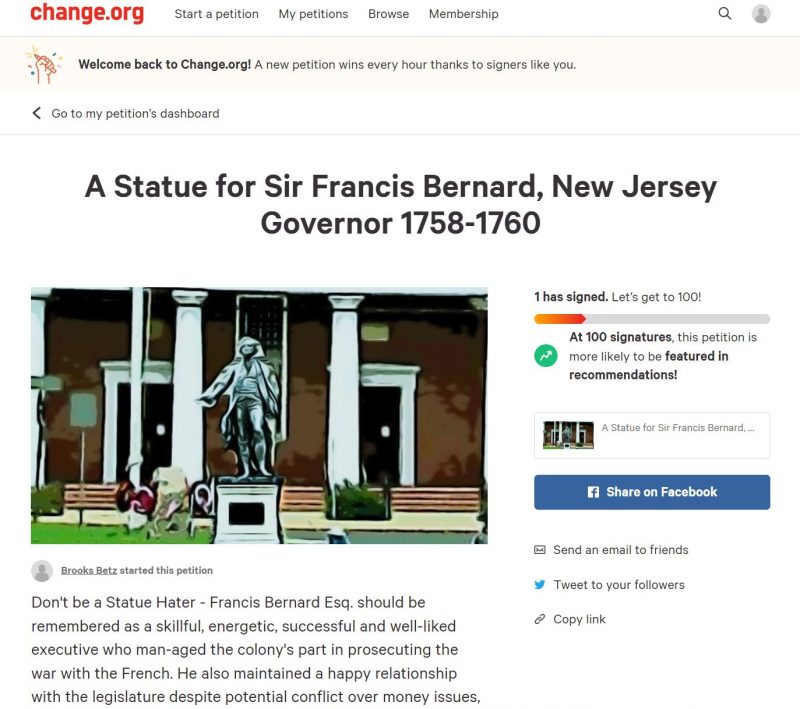
Additional Research
Francis Bernard was the apotheosis of British colonialism and an implacable arch-enemy of the American struggle for self-government. Bernard’s adversaries included some of the Revolution’s most venerated leaders, such as Otis’s friend Samuel Adams, the most influential of Boston’s popular politicians, and Samuel’s cousin John, a promising lawyer and future U.S. president.
- Sophia Elizabeth Higgins (1903), “The Bernards of Abington”, Longmans, Green, and Company – Digital Book – Vol. 1.
- Life of Sir Francis Bernard by one of his sons. Sir Thomas Bernard
- Speech to the Lords of Trade in Perth Amboy —See Pages 23 and 116—June 20, 1758 (six days after landing).
- Book: (Requested to BT Library to purchase) The “Infamas Govener”: Francis Bernard and the Origins of the American Revolution
- Stellhorn, Paul A., and Birkner, Michael J. “Francis Bernard” in The Governors of New Jersey 1664–1974: Biographical Essays. (Trenton, New Jersey: New Jersey Historical Commission, 1982), 62–65.
- Governor Francis Bernard and the Origins of the American Revolution. Paper delivered to Modern History Research Seminar Series, University of Edinburgh, Wed. January 28, 1998 Dr C Nicolson Dept. History, University of Stirling 1998 © Colin Nicolson
- Channing, Edward, and Archibald Cary Coolidge, eds. The Barrington-Bernard Correspondence. New York: Da Capo Press, 1912.
- The Papers of Sir Francis Bernard -by Professor Colin Nicolson
- The Papers of Sir Francis Bernard – Volume 1 by Professor Colin Nicolson – The Bernard Papers is a comprehensive selection of the correspondence and other papers of Sir Francis Bernard (1712-79), governor of colonial Massachusetts between 1760 and 1769.
- UPenn Collection of Francis Bernard research
- His two children, Thomas (fourth son) and Julia (third daughter), were born in Perth Amboy. They also wrote about their experiences in New Jersey and Massachusetts: “Life of Sir Francis Bernard,” by One of his sons.
